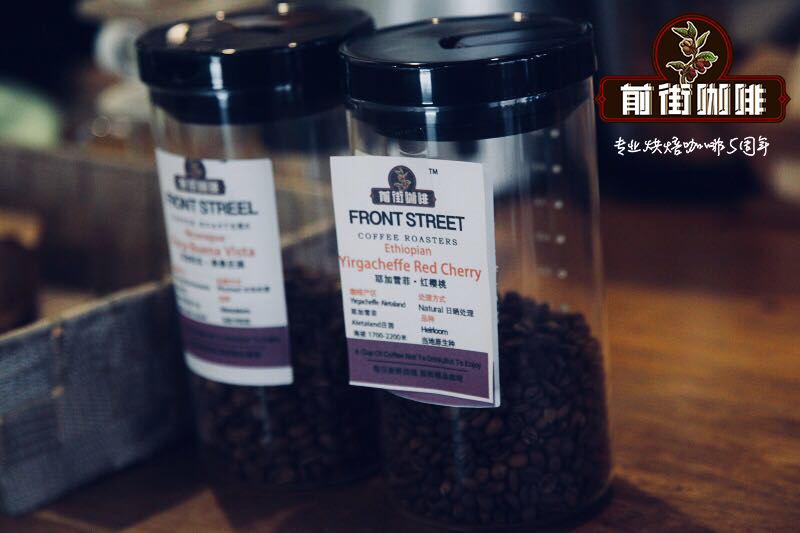African boutique coffee | what is the difference in coffee flavor between Ethiopia and Kenya

Coffee beans from African countries are my favorite. When I first tried African coffee beans, what triggered me was that coffee didn't taste like coffee at all. Africa, and more specifically East Africa, produces some of the world's most unique coffee, characterized by bright floral aromas, fruit and wine tones, and rich acidity. All in all, African coffee beans are full of flavor! I encourage everyone to explore and enjoy African coffee because of their wide range of tastes.
Ethiopia
Ethiopia and Kenya are not only one of the most unique coffee producers in the world, but also one of the highest quality coffee producers in the world. Ethiopia is perhaps the most eye-catching of all coffee-producing countries. The fascination stems not only from the unusual and surprising coffee it produces, but also from the mystery around it.
The history of coffee in Ethiopia can be traced back to the beginning when the first Arabica coffee factory was discovered in the ninth century. According to legend, goat herdsmen noticed the plant after realizing its energy effect on the herd.
Ethiopia is the largest coffee producer in Africa. In 2016, the company produced 384000 tons of coffee. Ethiopia is the geographical location of Arabica coffee, which is the most popular coffee bean in the world. Coffee is not a small part of Ethiopia's economy-more than 28% of Ethiopia's annual exports are coffee. Coffee farms in Ethiopia are called gardens, forests, semi-forests or plantations. A total of 15 million people participated in the coffee production process from picking to export.
Ethiopian coffee is widely wet-processed and comes from one of the three main growing areas-Sidamo, Harald, and Kafa-and often has one of its names. The complex mixture of Ethiopian native species and varieties provides a unique flavor for these coffees. When buying Ethiopian coffee, this variety is usually unknown because they label most coffee as Ethiopia; the variety label of the original species. This means that your batch / crop may be a mixture of SL28,SL38,Catuai,Geisha and Typica, which is very unusual. Ethiopians do this because Panamanians have stolen geisha from them from time to time, and they don't want it to happen again. Art ish is considered to be the most prestigious and valuable coffee variety in the world, and can be called the coffee queen.
The best washed coffee can be incredibly elegant, complex and delicious, while the best naturally processed coffee can be said to be fruity and fascinating. Coffee is famous for its unique and elegant floral, herbal and citrus aromas. The flavor is unique, sensitive and delicate. People from Ethiopian coffee can aftertaste the aromas of jasmine, bergamot and blueberry. The coffee is not very strong and its acidity is moderate and pleasant. Usually, Ethiopian coffee is strong, with aromas of wine, flowers and tea.
Kenya
Kenya produces high-quality Arabica coffee, which is famous all over the world for its unique and delicate flavor. The favorable climatic conditions in the highlands of Kenya make it easy for the country to produce the best coffee beans in the world.
Kenyan coffee is famous in Europe and the United States. Beans produce sharp fruity acidity with a full aroma. Coffee is usually grown by small farmers at the foot of Mount Kenya. Kenyan manufacturers focus on quality and, as a result, processing and drying procedures are strictly controlled and monitored. Kenya has its own unique grading system. Kenya's AA is the largest coffee bean in the 10-tier rating system, while AA + is a standard set by some companies.
Arabica coffee in Kenya grows on rich volcanic soil in the highlands between 1400 and 2000 meters above sea level. Altitude affects taste, and it can be said that Kenyan coffee is not suitable for people who are bad for acidity. But if you like acidity, Kenyan coffee is the best choice.
Kenya offers some of the most aromatic, brightly acidic coffee in the world. The palate is complex and can have interesting fruit, berry and citrus flavors, some almost wine. In terms of taste, Kenyan coffee can be divided into two categories: large and bold, clean and juicy, or tropical and crispy. Compared with Ethiopian coffee, Kenyan coffee is brighter and more acidic. Anyway, if you have a chance to drink this coffee, I'm sure you won't be disappointed.
Only about 330 farms in Kenya have 15 hectares or more of land. Slightly more than half of the coffee producers are small farmers, with only one piece of land and two hectares per person. Arabica coffee is grown in Kenya, especially SL,K7 and Ruiru varieties.
Important Notice :
前街咖啡 FrontStreet Coffee has moved to new addredd:
FrontStreet Coffee Address: 315,Donghua East Road,GuangZhou
Tel:020 38364473
- Prev

Coffee roasting | how to control the roasting degree of coffee what should be paid attention to in roasting coffee
Basic roasting curve: s curve S curve is a very simplified and relatively easy to use profile for medium roasting coffee. More importantly, this is a good starting point, and you will be able to experiment with it over time. This figure shows the basic S-curve baking curve. As you can see, the temperature is on the Y axis and the time is on the X axis. I didn't include any specific
- Next

Rwanda Coffee Origin Rwanda Cooperative Coffee how to buy Rwandan Coffee
In Rwanda, it is incredibly neat. It is even forbidden to bring plastic bags into this densely populated small country. The charming streets are colorful and lively, and the same atmosphere is found in coffee processing facilities. I feel leisurely and comfortable, not confused at all. Rwandan coffee originated in Rwanda, where berries (or cherries) are picked by hand and transported to a processing station.
Related
- Detailed explanation of Jadeite planting Land in Panamanian Jadeite Manor introduction to the grading system of Jadeite competitive bidding, Red bid, Green bid and Rose Summer
- Story of Coffee planting in Brenka region of Costa Rica Stonehenge Manor anaerobic heavy honey treatment of flavor mouth
- What's on the barrel of Blue Mountain Coffee beans?
- Can American coffee also pull flowers? How to use hot American style to pull out a good-looking pattern?
- Can you make a cold extract with coffee beans? What is the right proportion for cold-extracted coffee formula?
- Indonesian PWN Gold Mandrine Coffee Origin Features Flavor How to Chong? Mandolin coffee is American.
- A brief introduction to the flavor characteristics of Brazilian yellow bourbon coffee beans
- What is the effect of different water quality on the flavor of cold-extracted coffee? What kind of water is best for brewing coffee?
- Why do you think of Rose Summer whenever you mention Panamanian coffee?
- Introduction to the characteristics of authentic blue mountain coffee bean producing areas? What is the CIB Coffee Authority in Jamaica?

